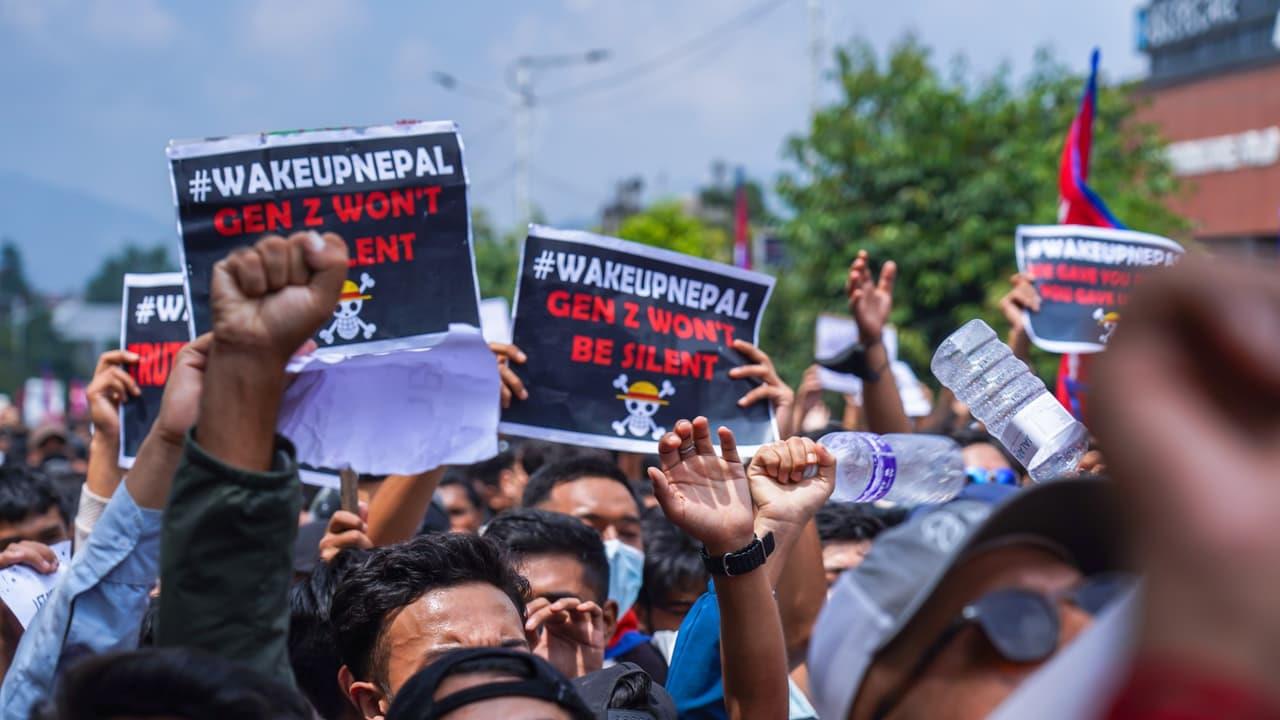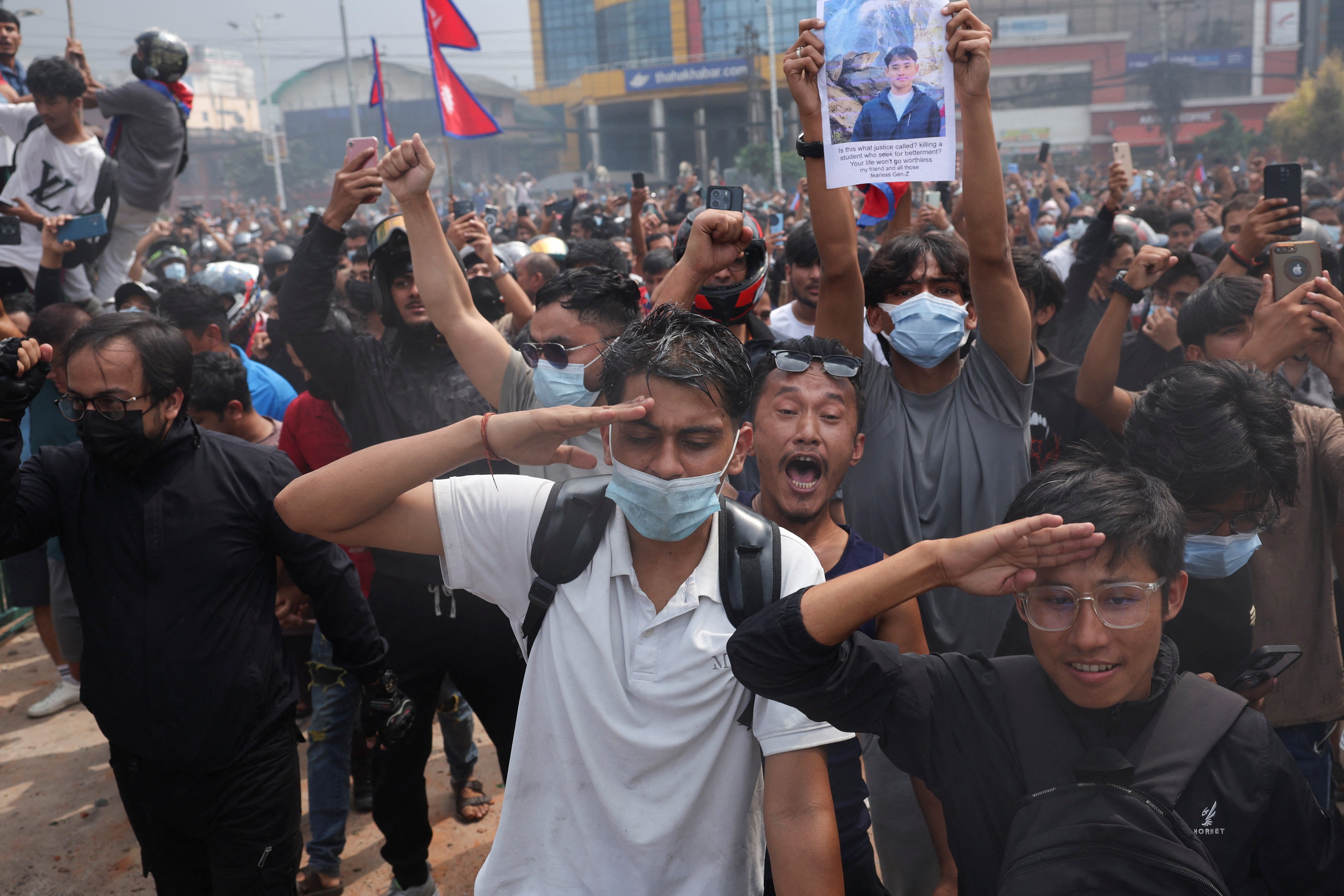Nepal’s “Gen Z” Uprising: How a Social Media Ban Sparked Nationwide Protests
Nepal has recently experienced one of the most significant youth-led movements in its modern history. What began as a government decision to restrict social media quickly escalated into mass demonstrations, political turmoil, and widespread calls for reform. The events highlight not only the power of digital platforms in shaping public life but also the frustrations of a generation determined to challenge entrenched systems.

The Trigger: A Social Media Ban
In early September 2025, the Nepali government announced a ban on several social media platforms. Officials justified the move by citing the need to control misinformation, fake identities, and online abuse. For many citizens, however, the ban felt like a direct attack on freedom of expression.
Young people, especially those in their late teens and twenties, saw the decision as the final straw. For them, social media was not only a tool for entertainment but also a vital space for learning, organizing, and connecting with the outside world. Within hours of the ban, demonstrations began to spread across Kathmandu and other major cities.

From Protest to Uprising
At first, the protests were peaceful. Students marched with banners, chanting slogans demanding both the restoration of online freedoms and an end to corruption. However, tensions escalated quickly as security forces responded with tear gas, water cannons, and rubber bullets. Clashes broke out near the federal parliament, and the situation spiraled out of control.
Government buildings were set ablaze, vehicles were damaged, and curfews were imposed in several districts. Streets filled with smoke and sirens, and the images of chaos spread rapidly—ironically through the very platforms the government sought to ban.
Human Cost and Disruption
The toll of the unrest has been heavy. Dozens of people lost their lives, and more than a thousand were injured. Families mourned loved ones, hospitals overflowed with casualties, and local communities faced days of uncertainty.
The violence also led to prison breaks, with thousands of inmates escaping during the turmoil. This created an additional challenge for authorities, who were already stretched thin trying to maintain order in the streets.
Economically, the unrest disrupted cross-border trade and local commerce. Perishable goods were left stranded, fuel shortages increased, and daily wage workers saw their livelihoods vanish overnight. For businesses and small traders, the crisis translated into millions in losses.

Political Fallout
The political consequences were swift. Facing mounting pressure, Prime Minister Khadga Prasad Oli announced his resignation. An interim government was formed, and for the first time in the nation’s history, a woman—former Chief Justice Sushila Karki—was appointed as interim prime minister. New national elections were scheduled for March 2026, marking a turning point in Nepal’s democratic journey.
Although the social media ban was eventually lifted, the move did little to calm public anger. Protesters insisted that their demands extended beyond online access—they wanted a system that valued fairness, transparency, and accountability.
Why the Youth Are Angry
While the social media ban was the spark, the fire was fueled by deeper grievances. Many young Nepalis feel locked out of opportunity. Jobs are scarce, and nepotism often trumps talent. Corruption scandals have eroded trust in institutions, while inequality has widened.
This generation, often referred to as Gen Z, is more globally connected than any before it. They see opportunities elsewhere and compare them with the stagnation at home. For them, social media is not only a tool of communication but also a symbol of global belonging. Taking it away felt like cutting them off from the world.

A Leaderless but Powerful Movement
One striking feature of the uprising is its lack of formal leadership. Unlike past protests driven by political parties or unions, this movement was largely spontaneous. Young people organized through online channels, neighborhood groups, and word of mouth.
This decentralized nature made the protests unpredictable but also powerful. No single leader could be arrested to end the momentum. Instead, the collective energy of thousands of young people carried the demonstrations forward.
The Road Ahead
Despite the resignation of the prime minister and the promise of elections, Nepal faces daunting challenges:
-
Restoring trust: Citizens want justice for those killed and injured. Without accountability, anger may resurface.
-
Ensuring stability: Security remains fragile, and the large number of escaped prisoners poses an ongoing risk.
-
Economic recovery: Trade disruptions, infrastructure damage, and loss of investor confidence will take months to repair.
-
Reform and inclusion: Above all, young people want to see corruption reduced and merit recognized. They want to feel included in shaping the nation’s future.
Conclusion
Nepal’s recent uprising is more than just a protest against a social media ban. It is a generational cry for change. The youth, connected, restless, and ambitious, are demanding a political system that reflects their hopes rather than their frustrations.
Whether Nepal’s leaders can rise to this challenge remains uncertain. But one thing is clear: the events of September 2025 have shown that a new political force has emerged. Gen Z in Nepal is no longer willing to remain silent—and their voices may define the country’s next chapter.
Watch video here:

